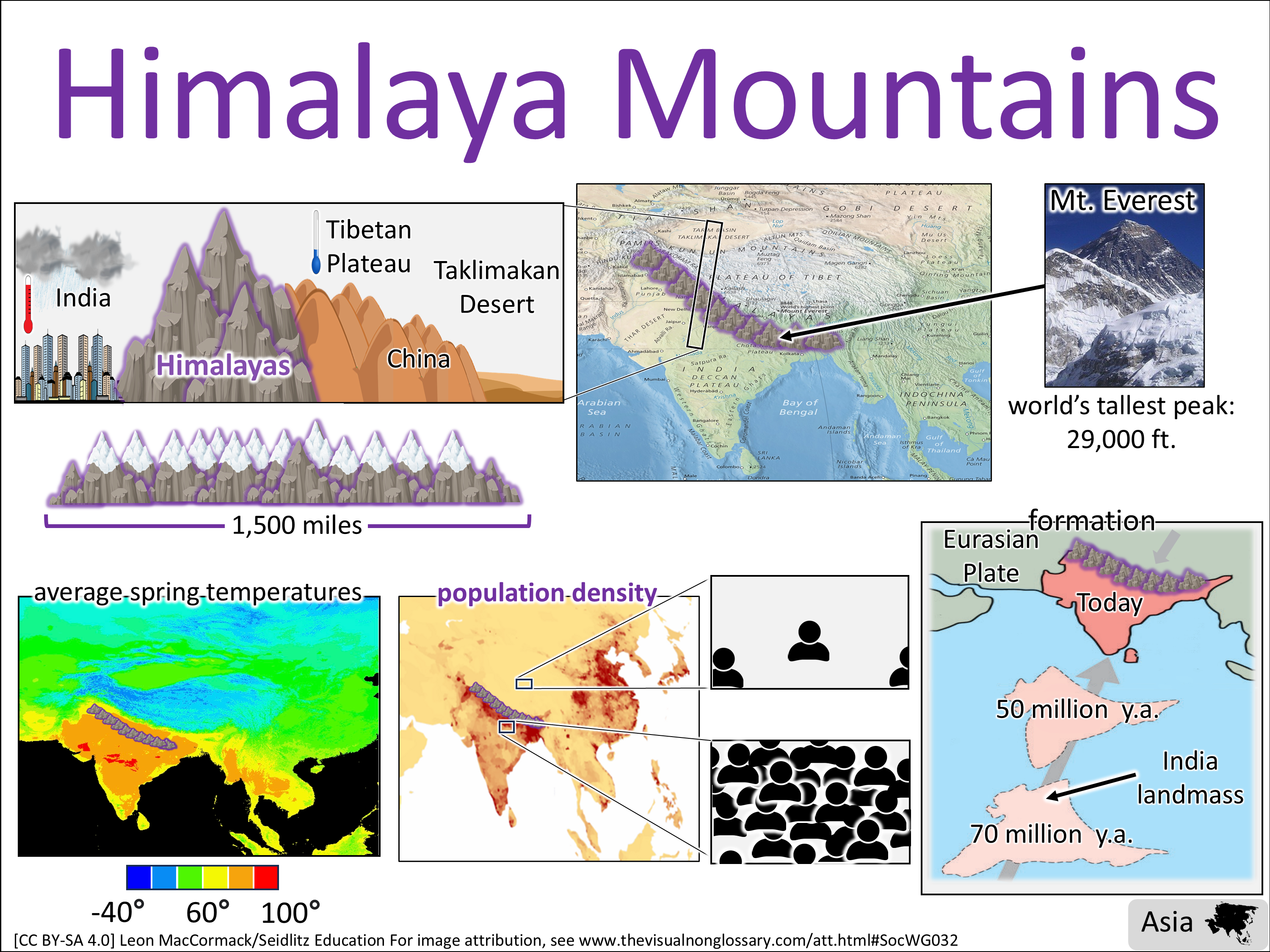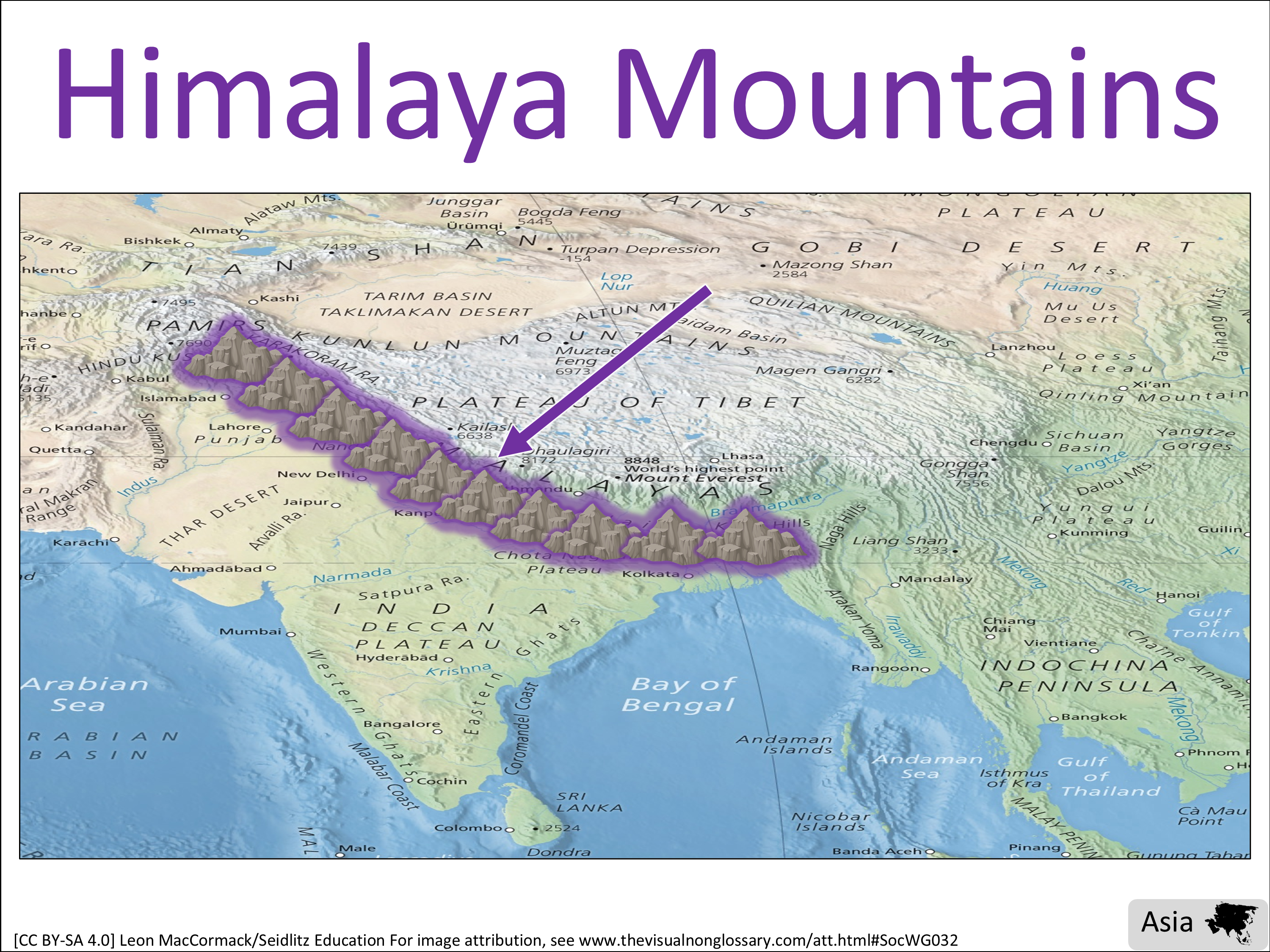Himalaya Mountains: World Geography 🌐 Ver en Español
Geography
Geography
Vertical Alignment
TEKS:
| 6th | 6.3(C), 6.4(A), 6.4(B) |
| World Geo | WG.3(B) WG.4(A) WG.4(B) WG.6(A) |
Linked To
Downloads
- Visual
- Word wall visual
- Lesson Plan
- Lesson Materials
Structured Conversation Questions
Observational
What are the Himalaya Mountains?
The Himalaya Mountains are...Relational
How are the Himalaya Mountains related to mountain barriers?
The Himalaya Mountains are related to mountain barriers because...Inferential
How do you think the Himalayas impact population density throughout Asia?
I think the Himalayas impact population densitythroughout Asia because...
Please log in to comment.
Students might notice in this visual:
- The Himalaya Mountains are located between India and China
- The mountains extend 1,500 miles across Asia
- Mt. Everest is part of the Himalayas and is the world’s highest peak
- The Himalayas formed where the Indian landmass collided with the Eurasian Plate
- There are different climate patterns on each side of the Himalayas — warmer and wetter to the south, colder and drier to the north
EXTENDING THE DISCUSSION
After the observational question, randomly call on one or more students to share what they or their partner answered. Then ask the class, “Did anyone notice…?” using the suggestions above or anything else you’ve noticed.
After the observational question, randomly call on one or more students to share what they or their partner answered. Then ask the class, “Did anyone notice…?” using the suggestions above or anything else you’ve noticed.
Students might wonder:
- Why do fewer people live near the Himalayas?
- How do the Himalayas affect temperature and precipitation?
- What makes Mt. Everest the highest peak?
- Why did tectonic plates collide in this region?
- How do mountain barriers affect weather in Asia?
EXTENDING THE DISCUSSION
After students have shared what they notice, ask the class, “Did anyone wonder…?” using the suggestions above or anything else you might think is interesting or relevant to the lesson.
After students have shared what they notice, ask the class, “Did anyone wonder…?” using the suggestions above or anything else you might think is interesting or relevant to the lesson.
Example student responses
To the observational question, What are the Himalaya Mountains?
LOW-LEVEL
The Himalaya Mountains are tall mountains in Asia with snowy peaks and Mt. Everest.
HIGH-LEVEL
The Himalaya Mountains are a massive mountain range formed by tectonic forces between the Indian and Eurasian plates, influencing both climate and population distribution in Asia.
RESPONDING TO RESPONSES
Emphasize and celebrate each student’s use of the key vocabulary to support a culture of “no wrong answers.”
Emphasize and celebrate each student’s use of the key vocabulary to support a culture of “no wrong answers.”



